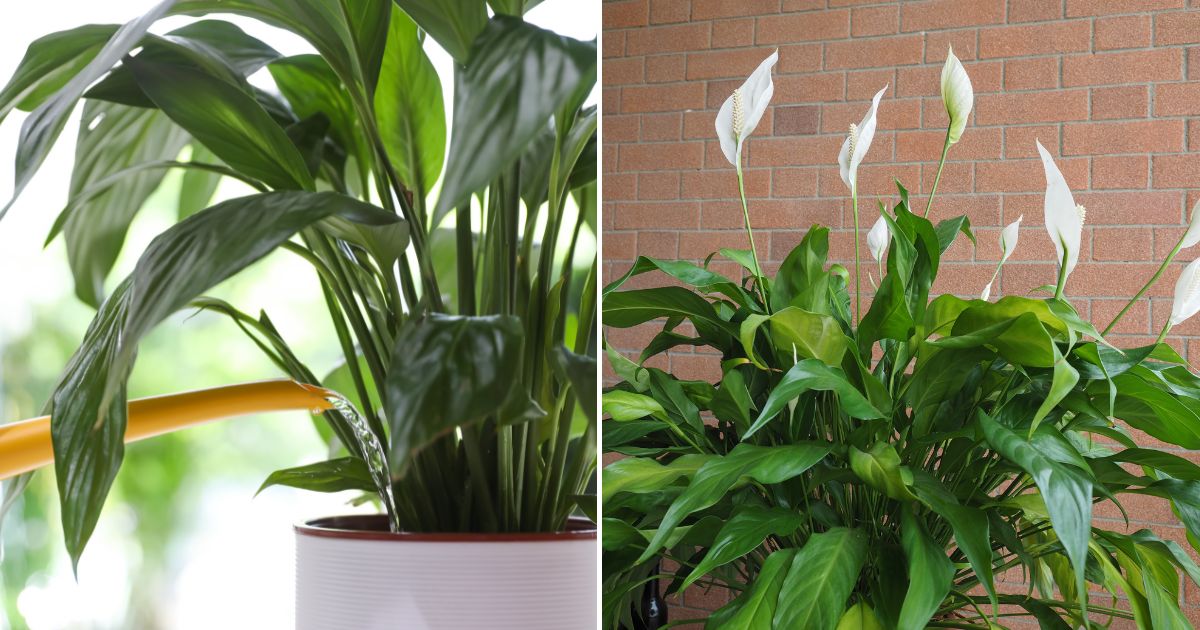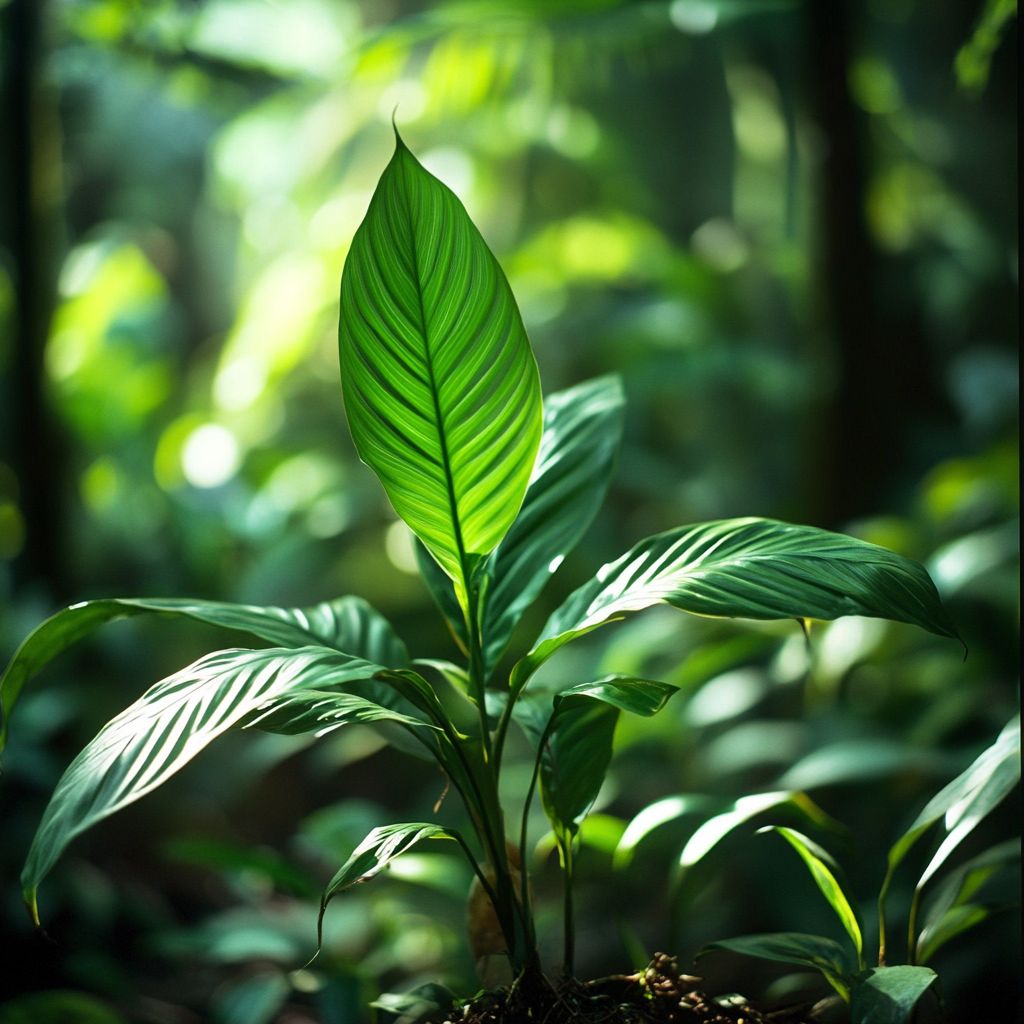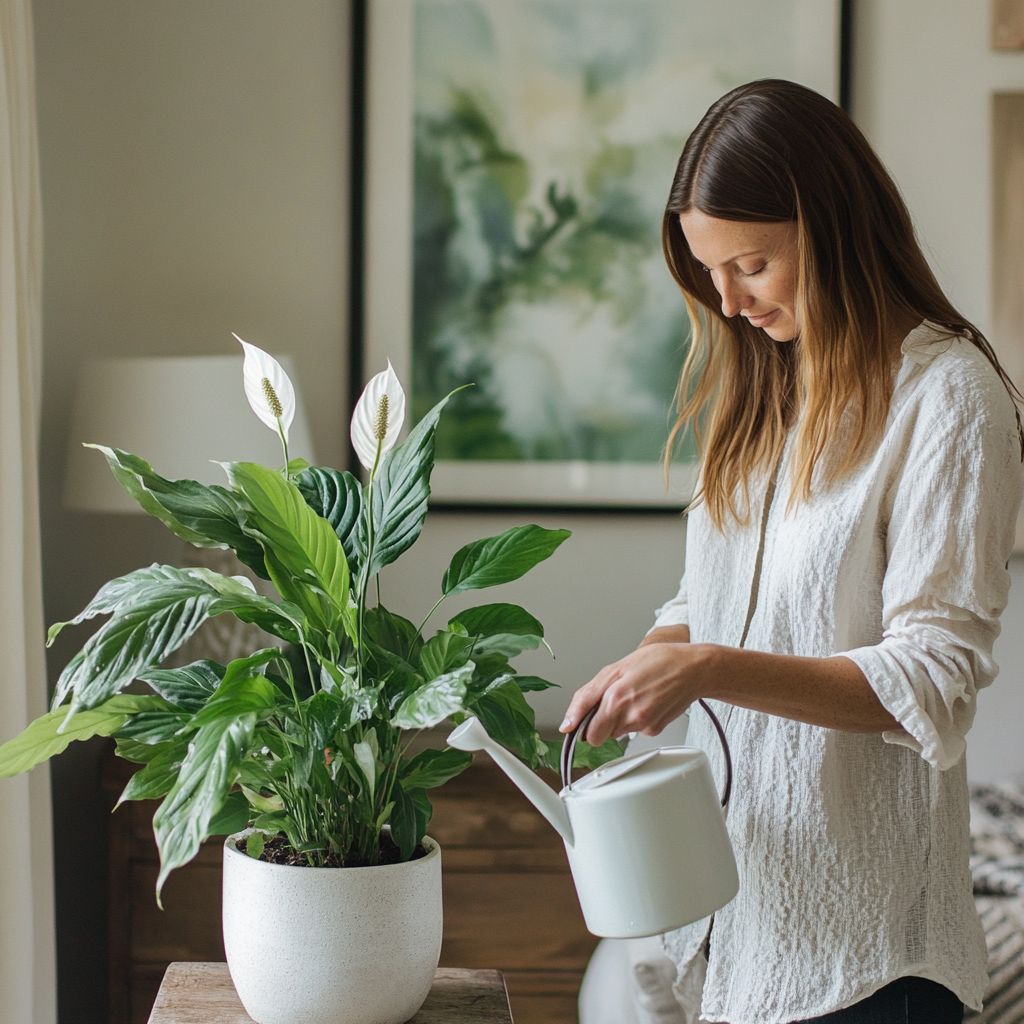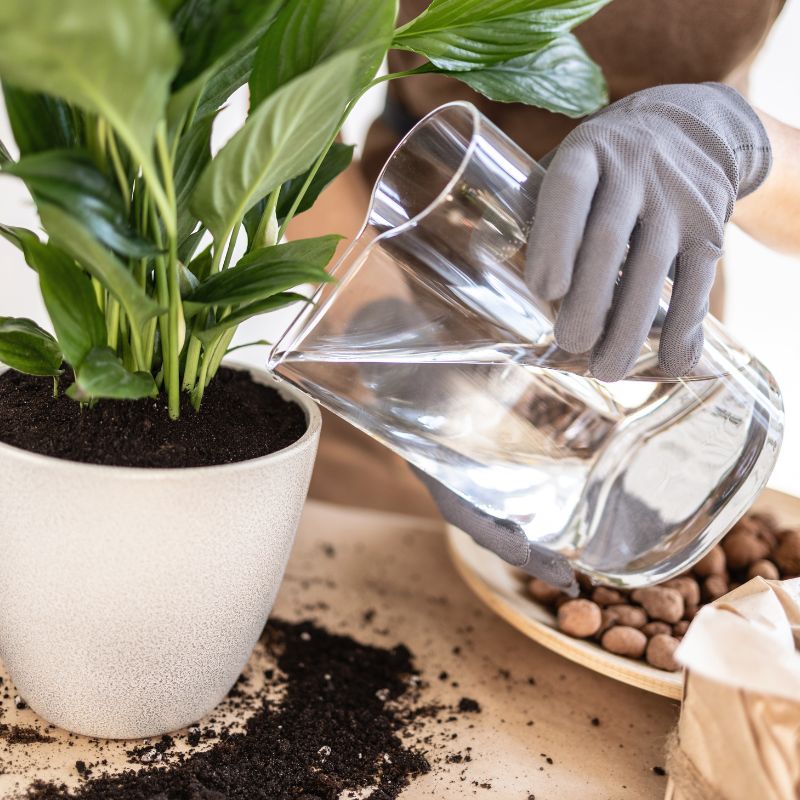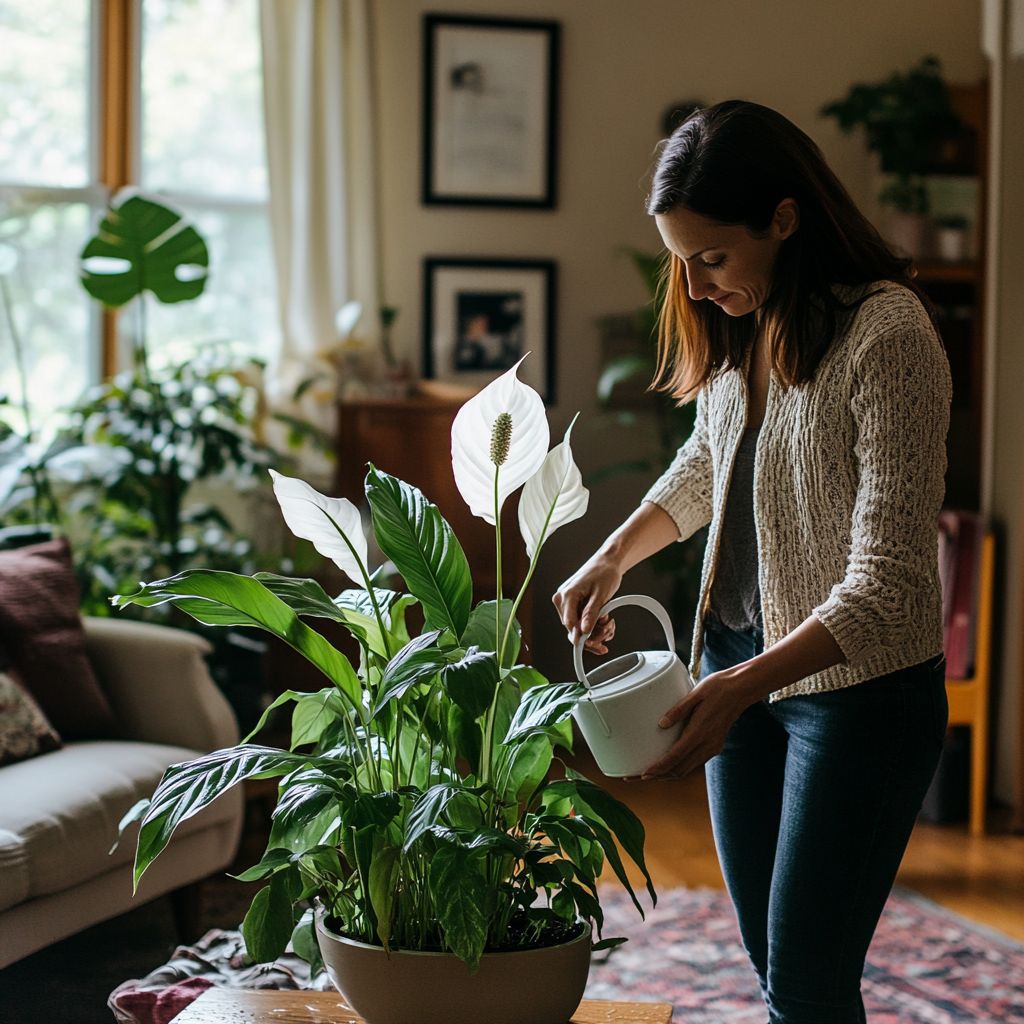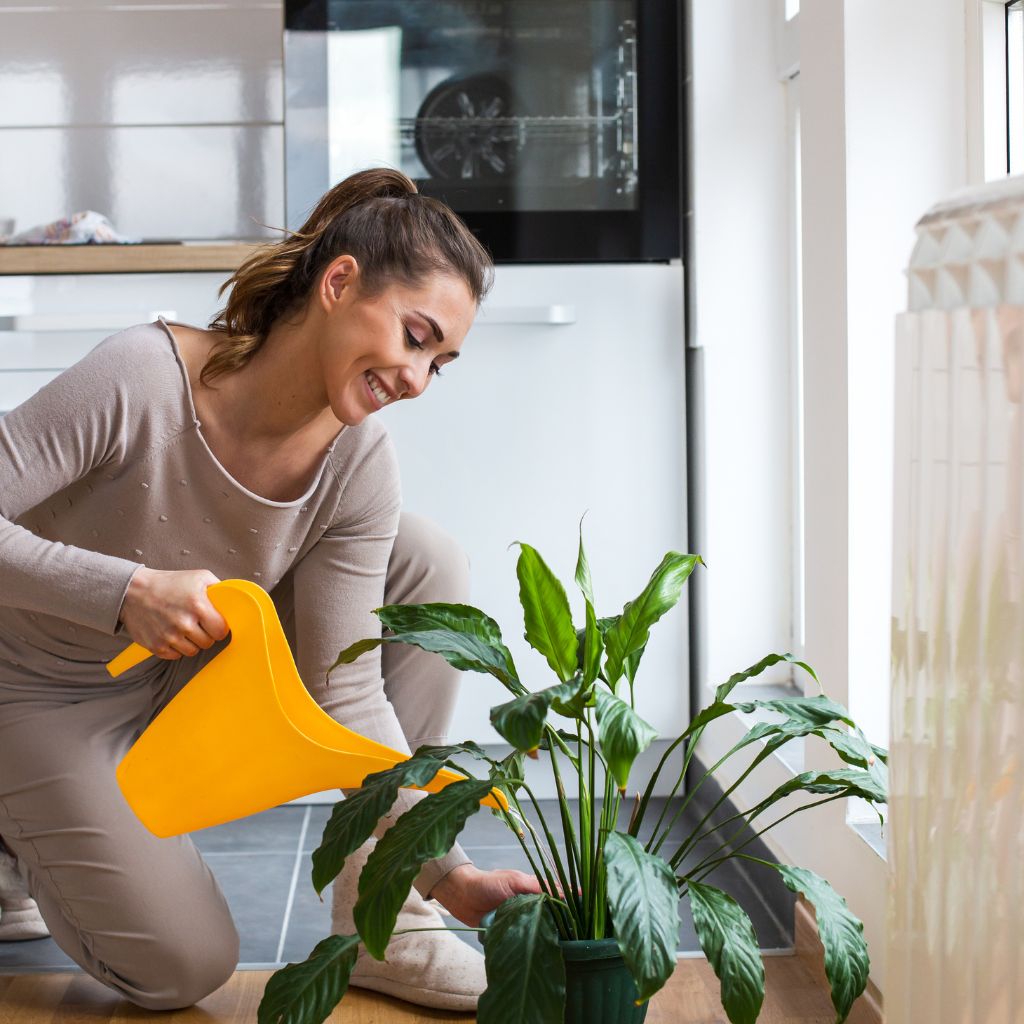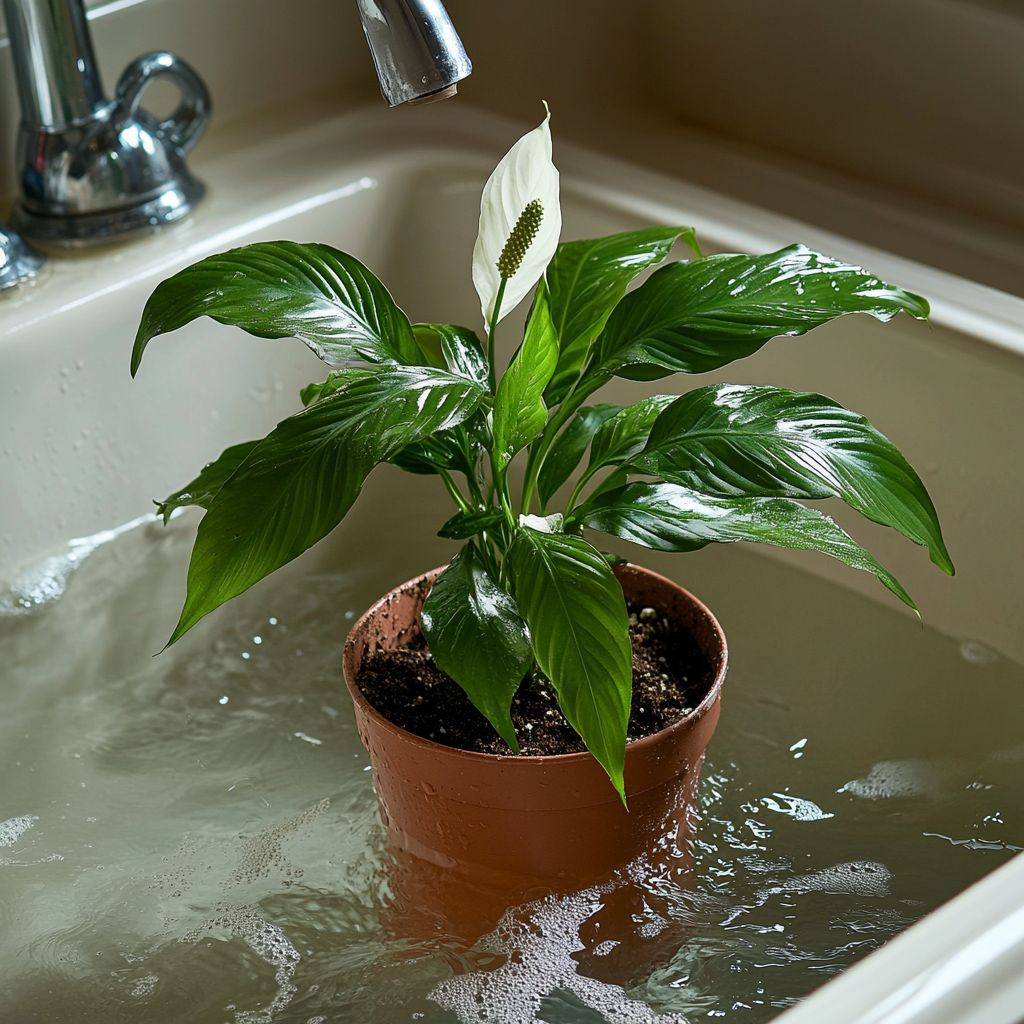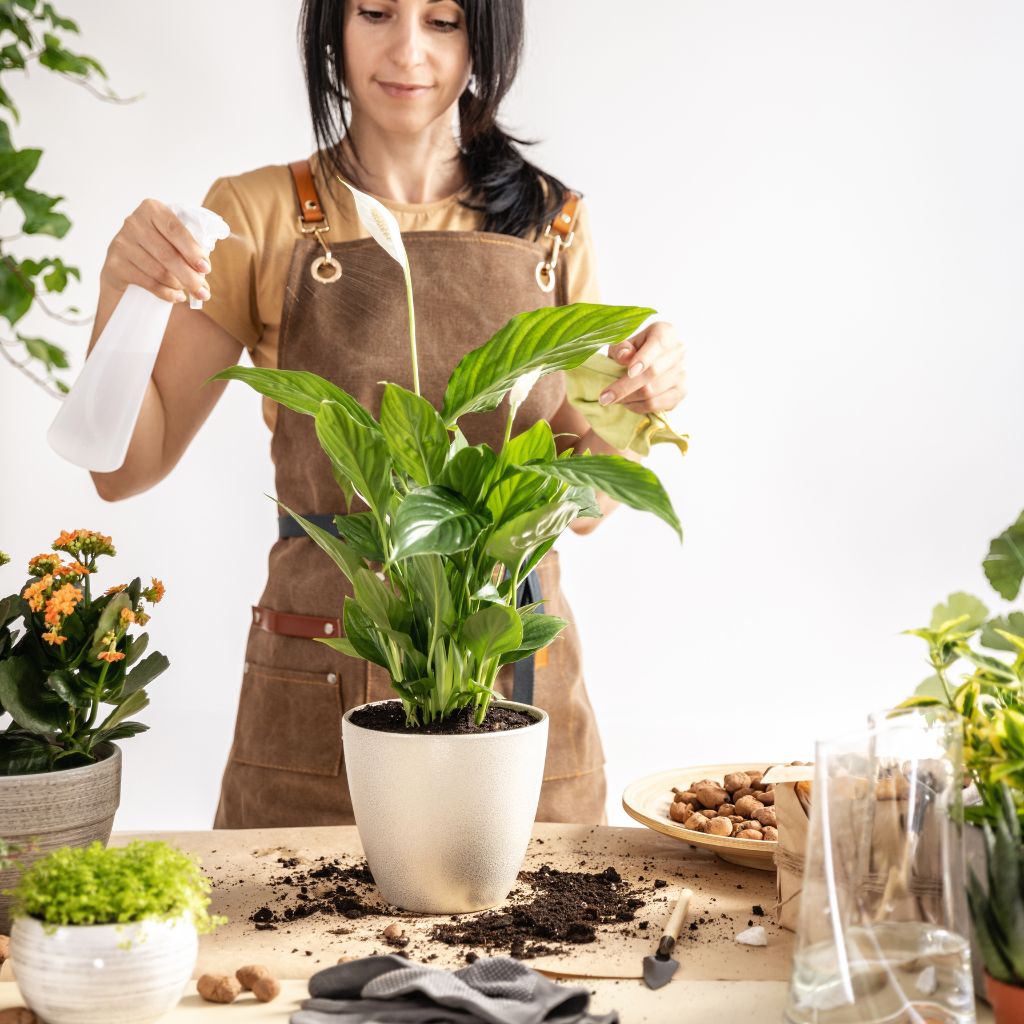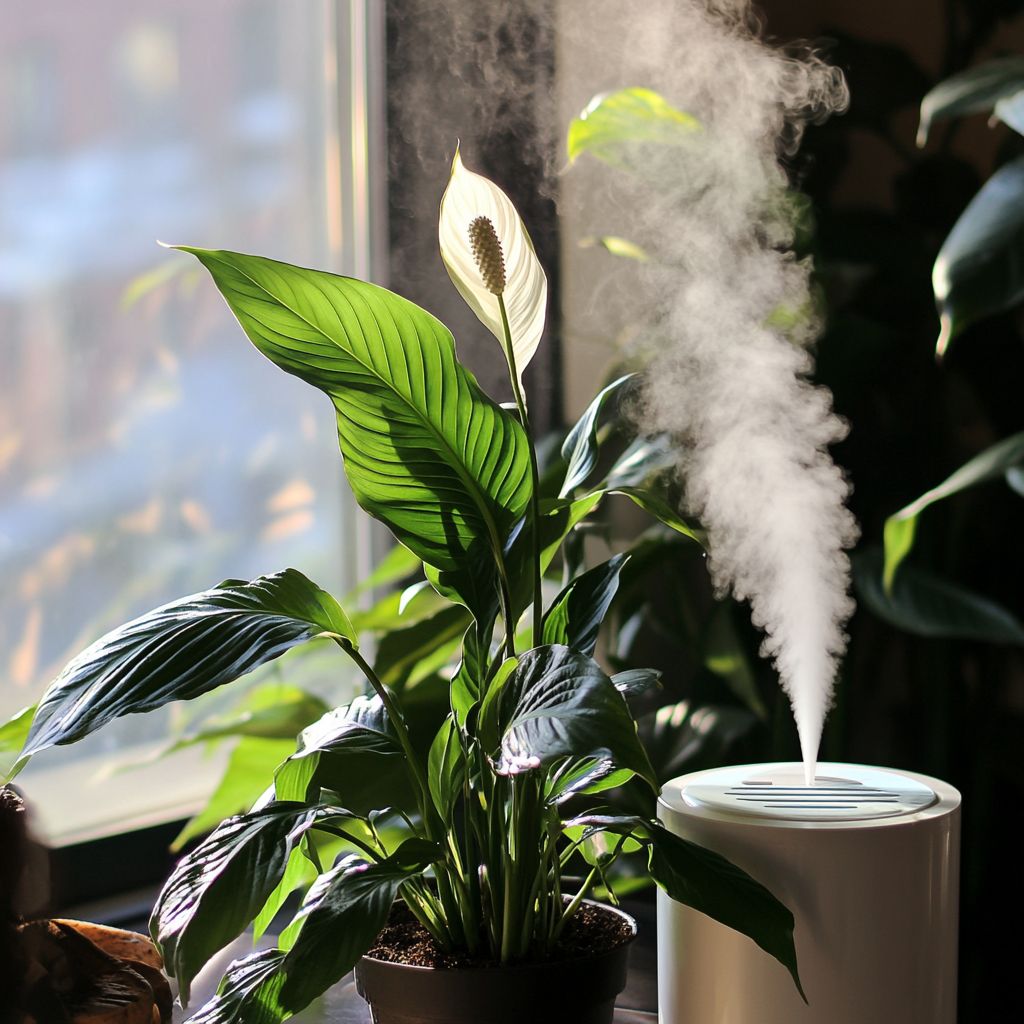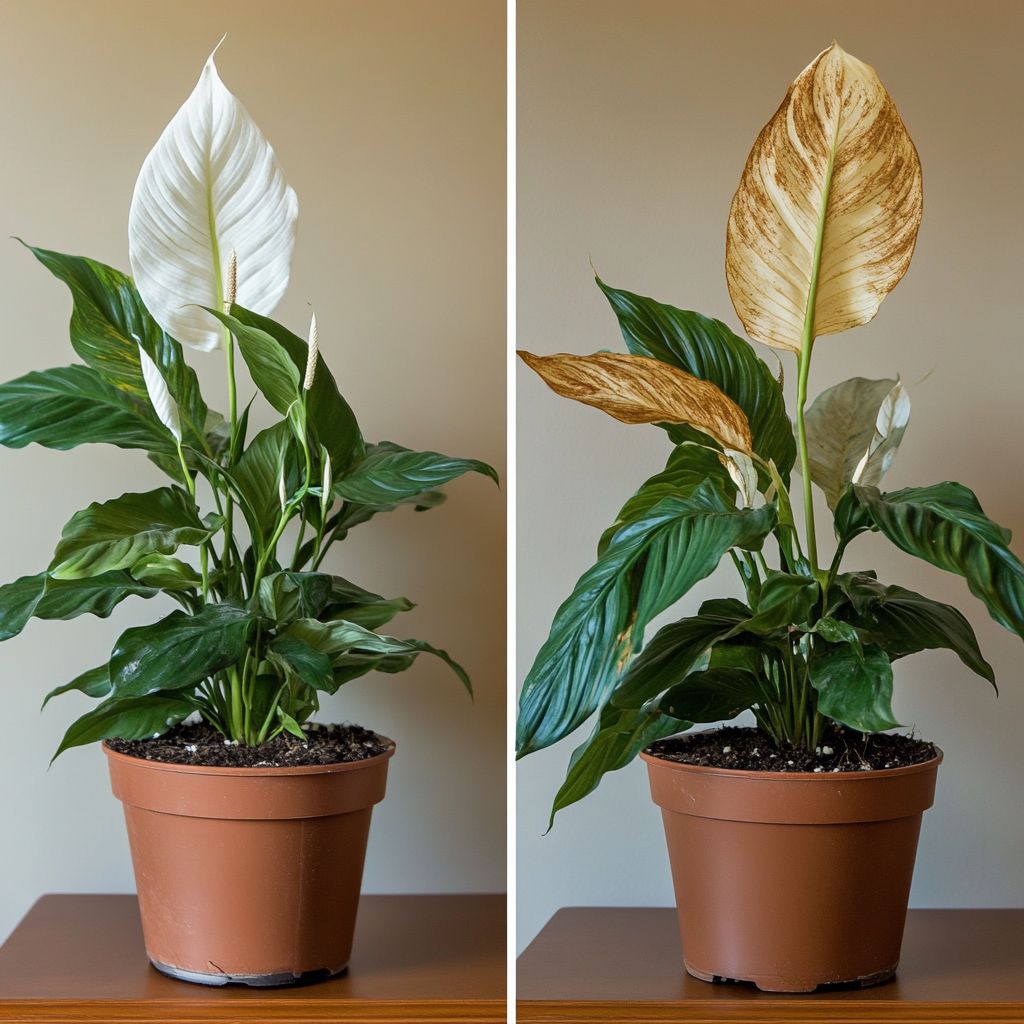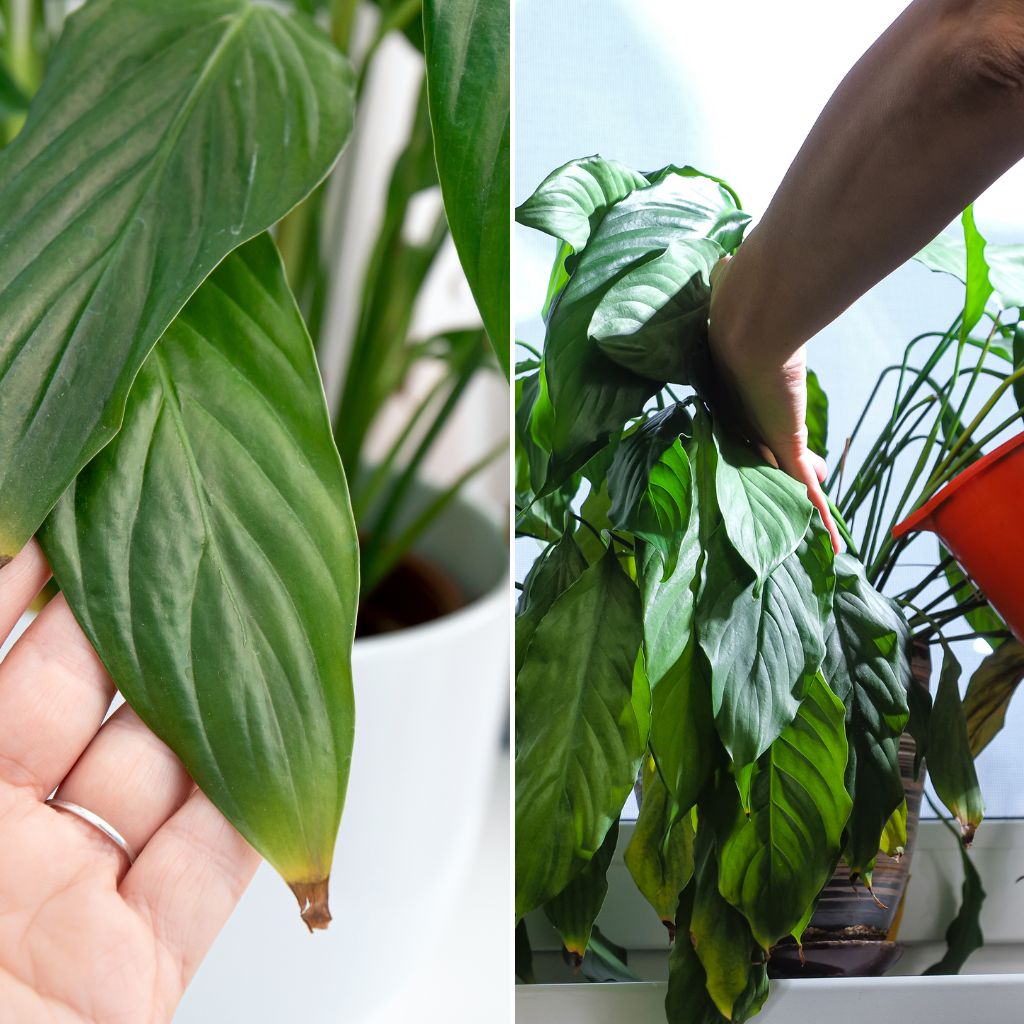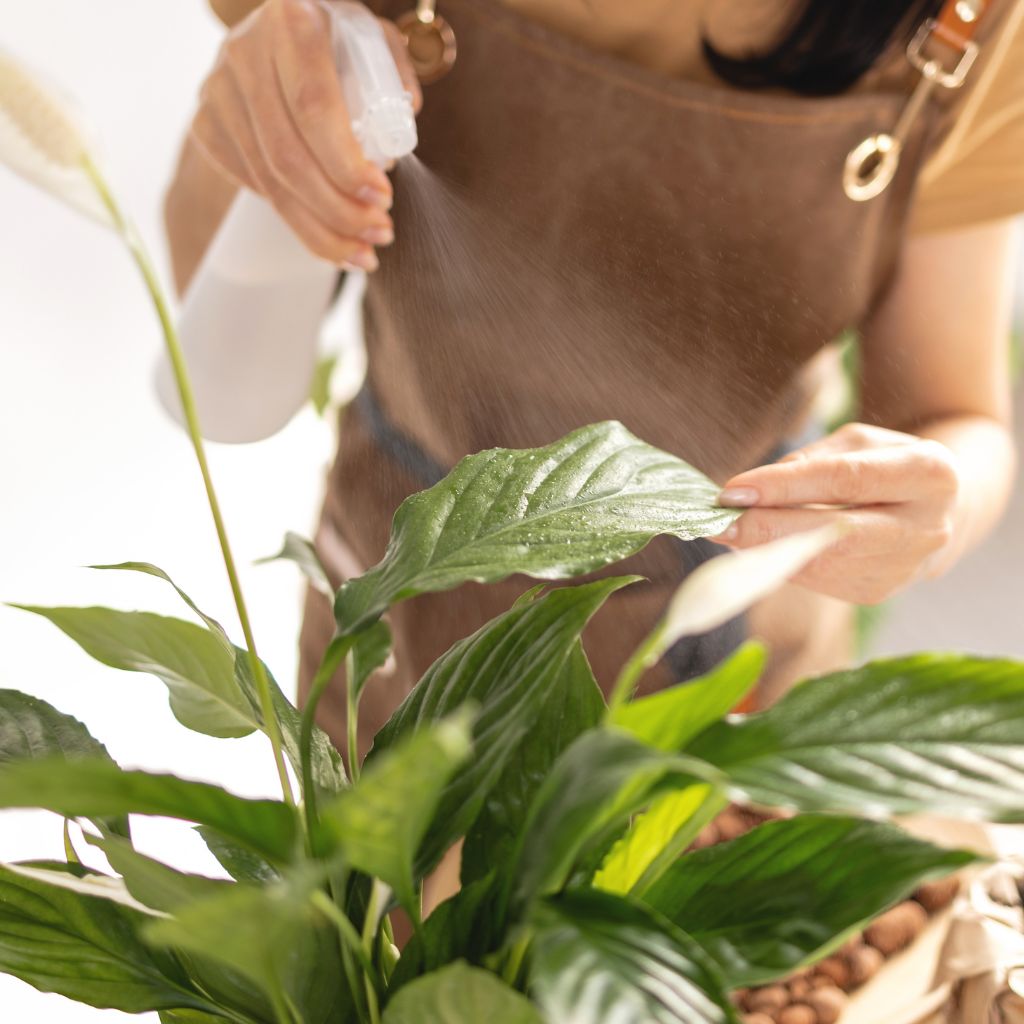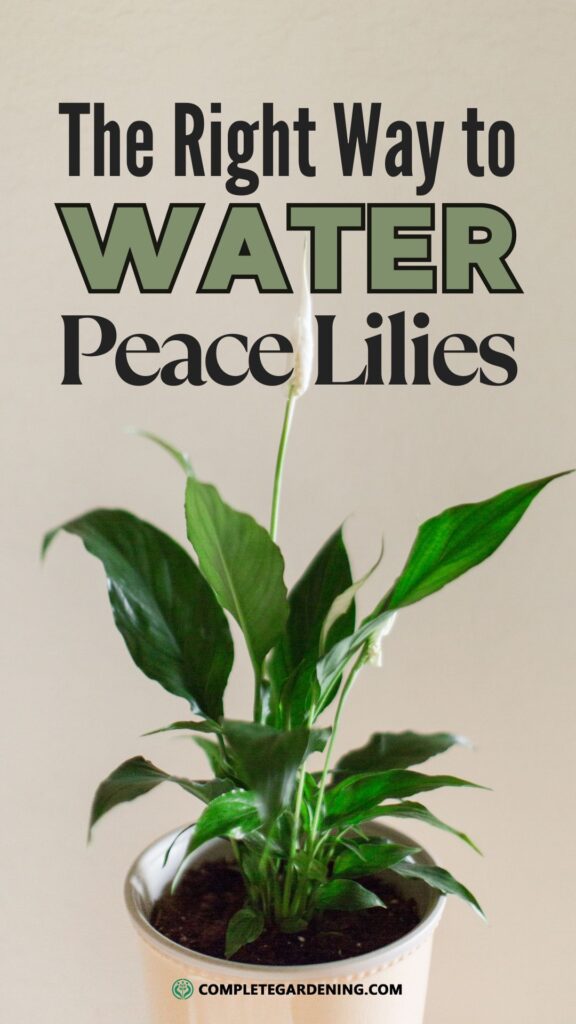Peace Lilies (Spathiphyllum) are a favorite among indoor plant enthusiasts for their lush green foliage and elegant white blooms.
While they are relatively easy to care for, understanding the right way to water Peace Lilies is crucial to keeping them healthy and vibrant.
Over-watering or under-watering can lead to various issues, including root rot, yellowing leaves, and drooping plants. This guide will walk you through the best practices for watering your Peace Lily, ensuring it thrives in your home.
Understanding Peace Lily Water Requirements
Peace Lilies are native to the tropical rainforests of Central and South America, where they grow under the canopy in consistently moist, but not waterlogged, soil.
This background gives us the first clue about their water needs: they prefer soil that remains slightly moist at all times. However, they are also quite sensitive to over-watering, which can quickly lead to root rot.
To meet these needs, it’s essential to strike a balance. The top 1-2 inches of soil should be allowed to dry out slightly between waterings. This ensures that the roots receive adequate oxygen and prevents the conditions that lead to fungal growth.
Choosing the Right Water for Your Peace Lily
The type of water you use can significantly impact the health of your Peace Lily. Tap water, especially if it’s heavily chlorinated or contains high levels of fluoride, can cause the leaf tips to turn brown.
To avoid this, use distilled water, rainwater, or filtered water if possible. If you must use tap water, let it sit out for 24 hours before using it to allow the chlorine to dissipate.
Room-temperature water is ideal, as cold water can shock the plant’s roots, leading to drooping leaves. On the other hand, water that is too warm can encourage bacterial growth in the soil.
The Best Watering Techniques for Peace Lilies
When it comes to watering your Peace Lily, the method you use is just as important as how often you water. Here are some of the best techniques:
1. Top Watering
Top watering is the most common method. Pour room-temperature water onto the soil until you see it begin to drain out from the bottom of the pot.
This ensures that the water reaches the root zone where it’s needed most. However, be sure to empty the saucer under the pot to prevent the plant from sitting in water, which can lead to root rot.
2. Bottom Watering
Bottom watering involves placing the pot in a shallow dish filled with water and allowing the plant to soak up moisture from the bottom.
This method encourages the roots to grow downward, promoting a healthy root system. It also helps avoid wetting the foliage, which can lead to fungal issues. After about 20 minutes, remove the pot and let it drain thoroughly.
3. Soaking
For a deeper watering, especially if the plant has been neglected, you can use the soaking method. Place the pot in a sink or bucket filled with water up to the soil level and let it soak for about 15-20 minutes.
This ensures the entire root ball is thoroughly hydrated. After soaking, allow the plant to drain completely before returning it to its saucer.
How Often to Water Your Peace Lily
The frequency of watering your Peace Lily depends on several factors, including the size of the plant, the type of pot, the soil mix, and the environmental conditions in your home.
1. Check the Soil
Rather than sticking to a strict schedule, it’s best to check the soil regularly. Insert your finger about 1-2 inches into the soil; if it feels dry, it’s time to water. If the soil still feels moist, wait a few more days.
2. Seasonal Adjustments
Peace Lilies require more water during the growing season (spring and summer) when they are actively producing new leaves and blooms. During this time, you may need to water once a week or even more frequently, depending on the conditions in your home.
In the winter, when the plant’s growth slows down, it’s crucial to reduce the frequency of watering. Over-watering during this period can lead to root rot since the plant’s water needs are lower.
Aim to water every two weeks or when the top inch of soil feels dry.
3. Environmental Factors
Factors such as temperature, humidity, and light exposure also play a role in how often you need to water your Peace Lily. In a warm, dry environment, the soil will dry out faster, requiring more frequent watering.
Conversely, in a cooler or more humid environment, you can reduce the watering frequency.
Recognizing Over-Watering and Under-Watering Symptoms – Signs of Over-Watering
Over-watering is one of the most common issues with Peace Lilies. Symptoms include yellowing leaves, a wilted appearance even though the soil is wet, and a musty smell from the soil, which indicates root rot.
If you suspect over-watering, reduce your watering frequency immediately and consider repotting the plant in fresh, well-draining soil.
Signs of Under-Watering
Under-watering typically causes the leaves to droop and may result in brown, crispy edges.
While Peace Lilies are somewhat forgiving and can bounce back after a missed watering, chronic under-watering can weaken the plant and reduce its ability to produce blooms.
If you notice these signs, water the plant thoroughly and increase your watering frequency slightly.
Using the Right Pot and Soil for Optimal Watering
The pot and soil you use for your Peace Lily can significantly affect how well it retains water. A pot with drainage holes is essential to allow excess water to escape, preventing waterlogged soil.
For the soil mix, choose one that is light and well-draining. A good mix might include peat moss, perlite, and a small amount of compost. This combination holds moisture without becoming compacted or waterlogged.
The Role of Humidity in Watering Peace Lilies
Peace Lilies thrive in humid environments, similar to their natural rainforest habitat. If the air in your home is dry, especially in winter when heating systems are running, you may need to water your plant more frequently or take steps to increase humidity. This can be done by placing a humidifier near the plant, misting the leaves regularly, or using a pebble tray filled with water.
Watering your Peace Lily correctly is key to maintaining its health and beauty. By understanding its water needs and adjusting your watering practices accordingly, you can enjoy a lush, thriving plant with stunning blooms.
Remember, the goal is to keep the soil consistently moist but not soggy, and always be mindful of environmental changes that may require you to adjust your watering routine.
With these tips, you’ll master the art of watering your Peace Lily, ensuring it remains a vibrant and cherished part of your indoor garden.
